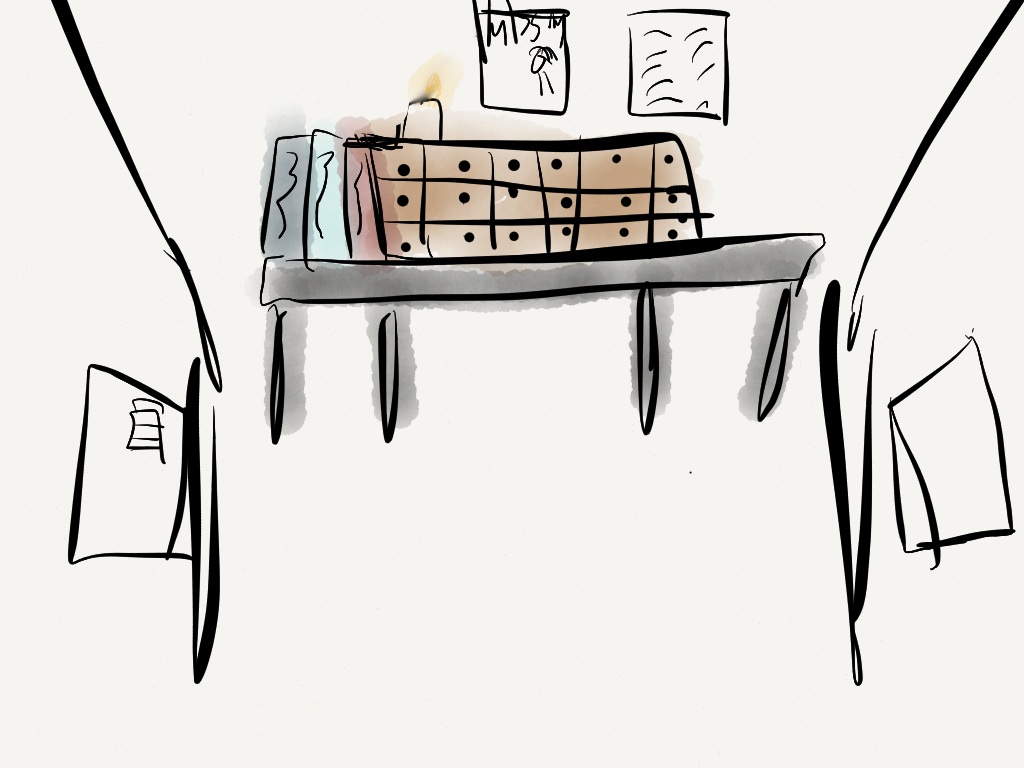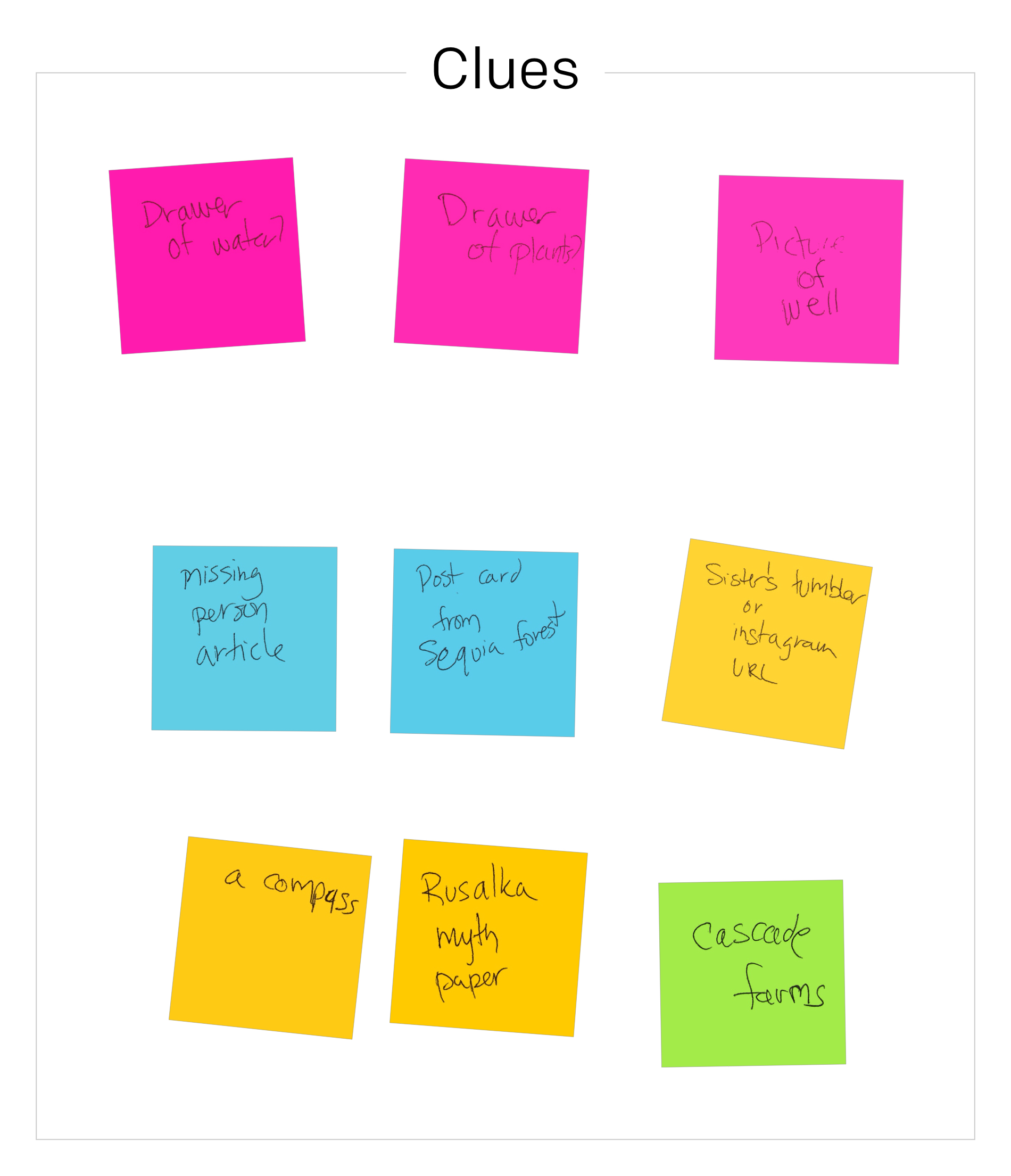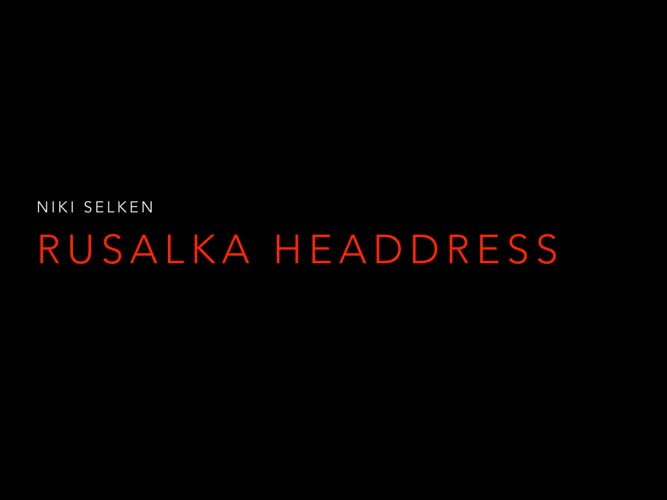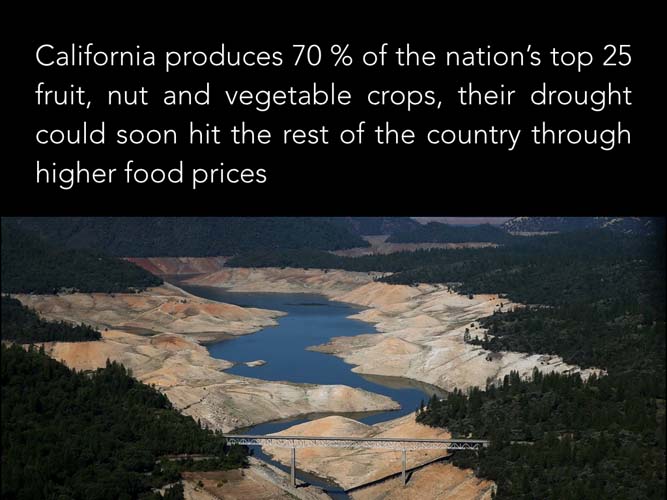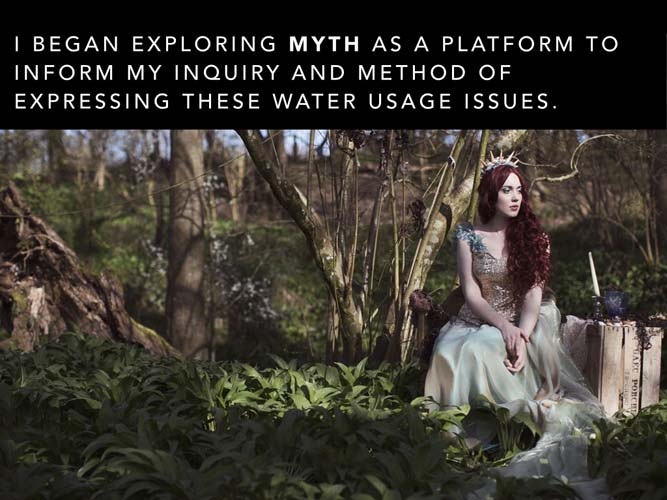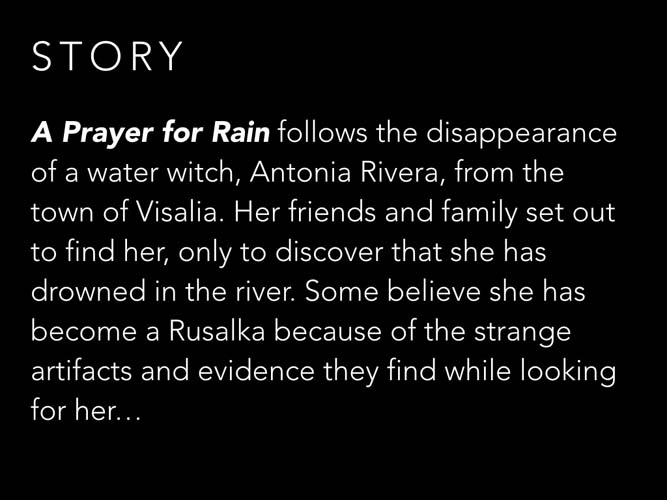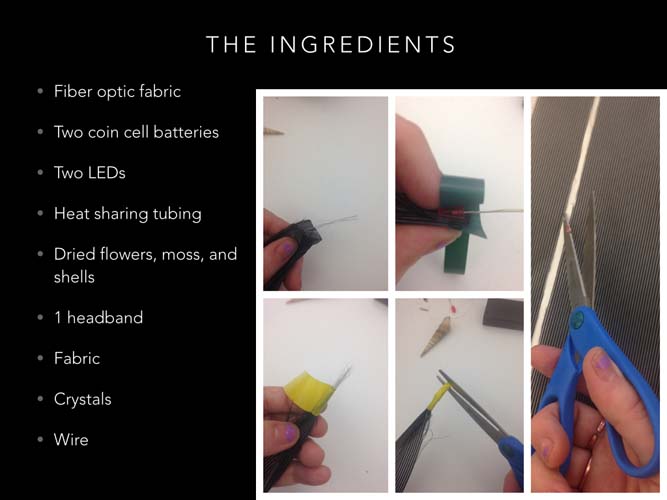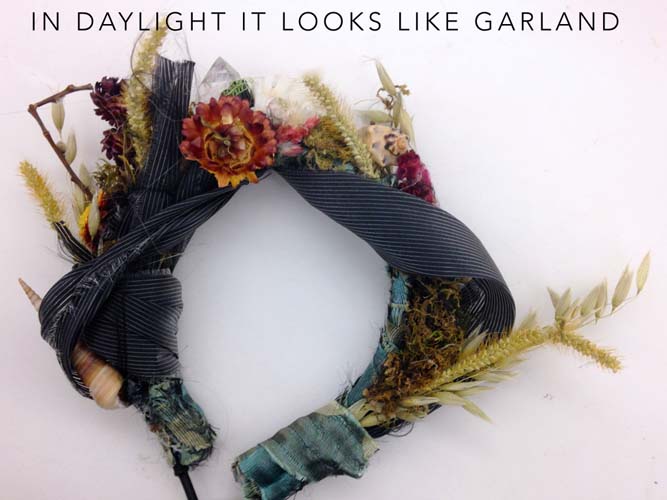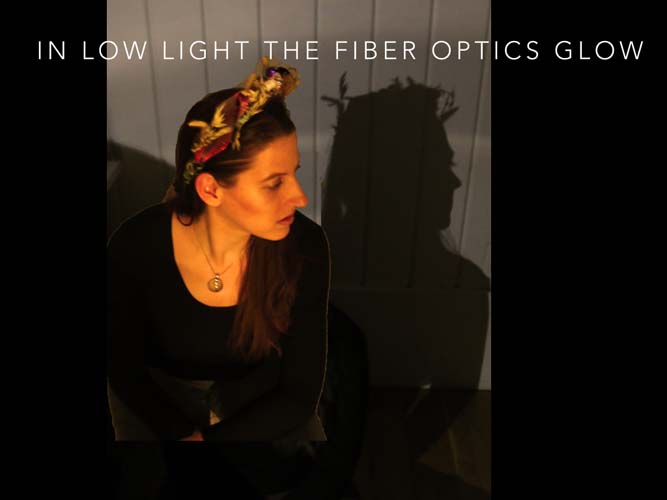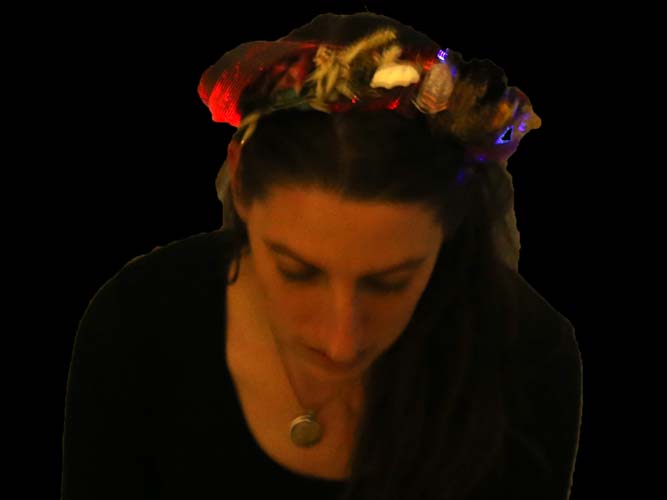Find Maria Rivera is a narrative, puzzle-based instillation which follows the story of the disappearance of a water witch from Visalia, CA. Situated between Escape The Room games and Participatory Theater, like Punch Drunk’s Sleep No More, Find Maria Rivera explores themes of environmentalism, mythology, and CSI. The piece leverages responsive objects, web experiences and audio to draw in the participant in a mysterious and emerging story experience. The story takes place in the central valley of California with the backdrop of the looming drought and water crisis. As the user enters the instillation they will be presented with a series of clues and puzzles in a CSI investigation room. The participant will explore the physical objects, text, mobile websites, and audio to unravel the mystery. This was developed as part of the Parsons MFA Design and Technology Thesis Project by Niki Selken. Find Maria RIvera was an award finalist for Indiecade 2015. See the project site here.
Curatorial Document
The Final Project Emerges
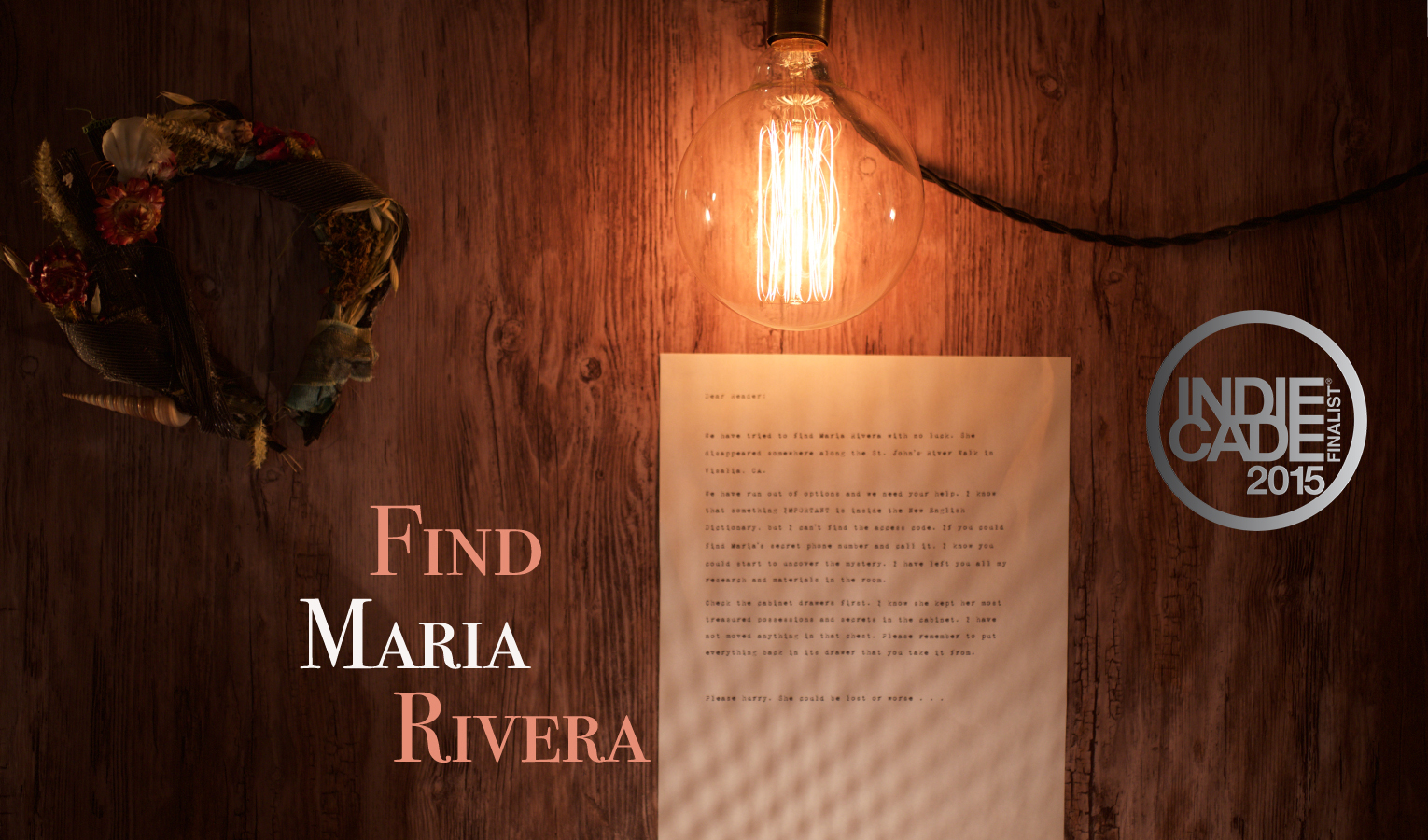
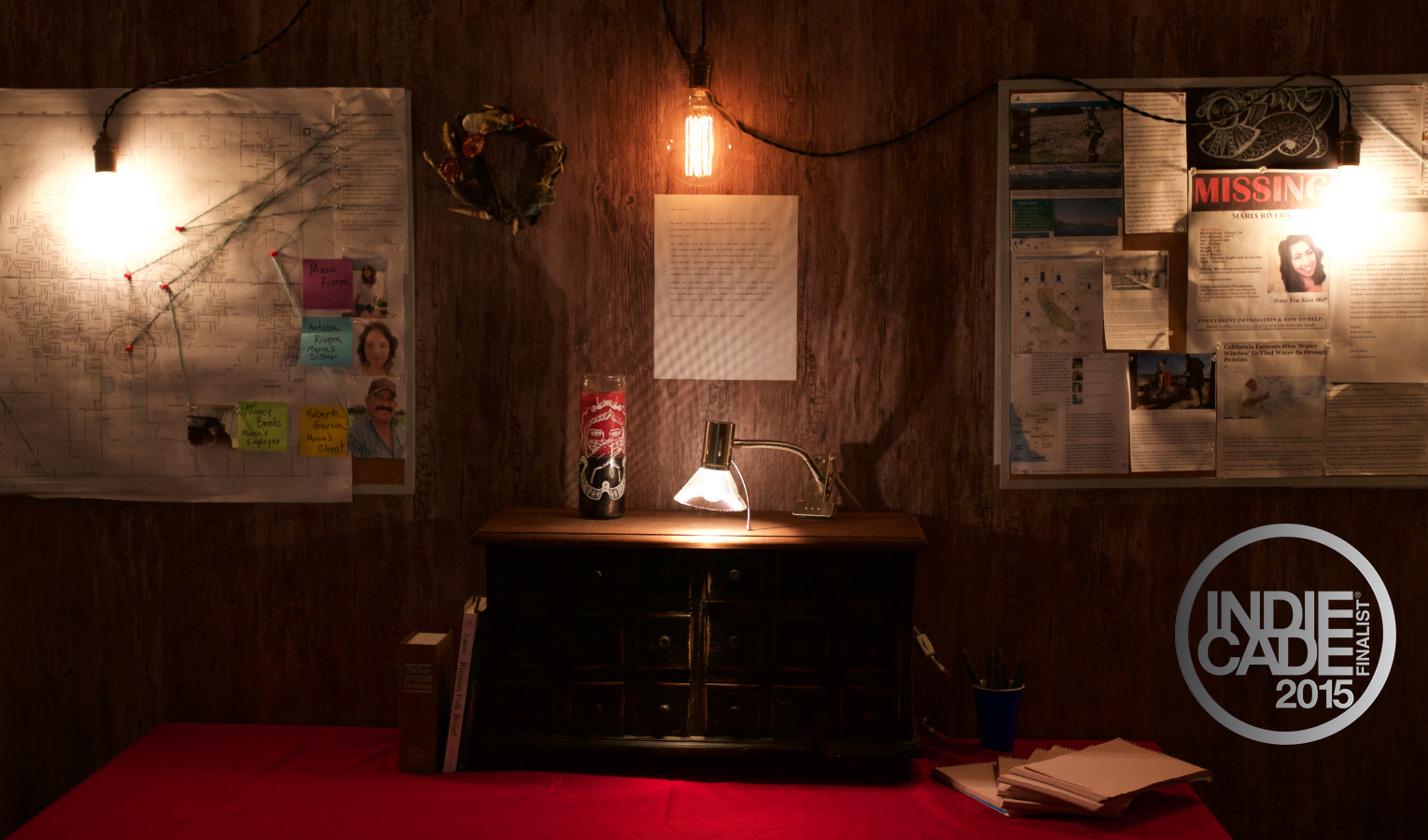
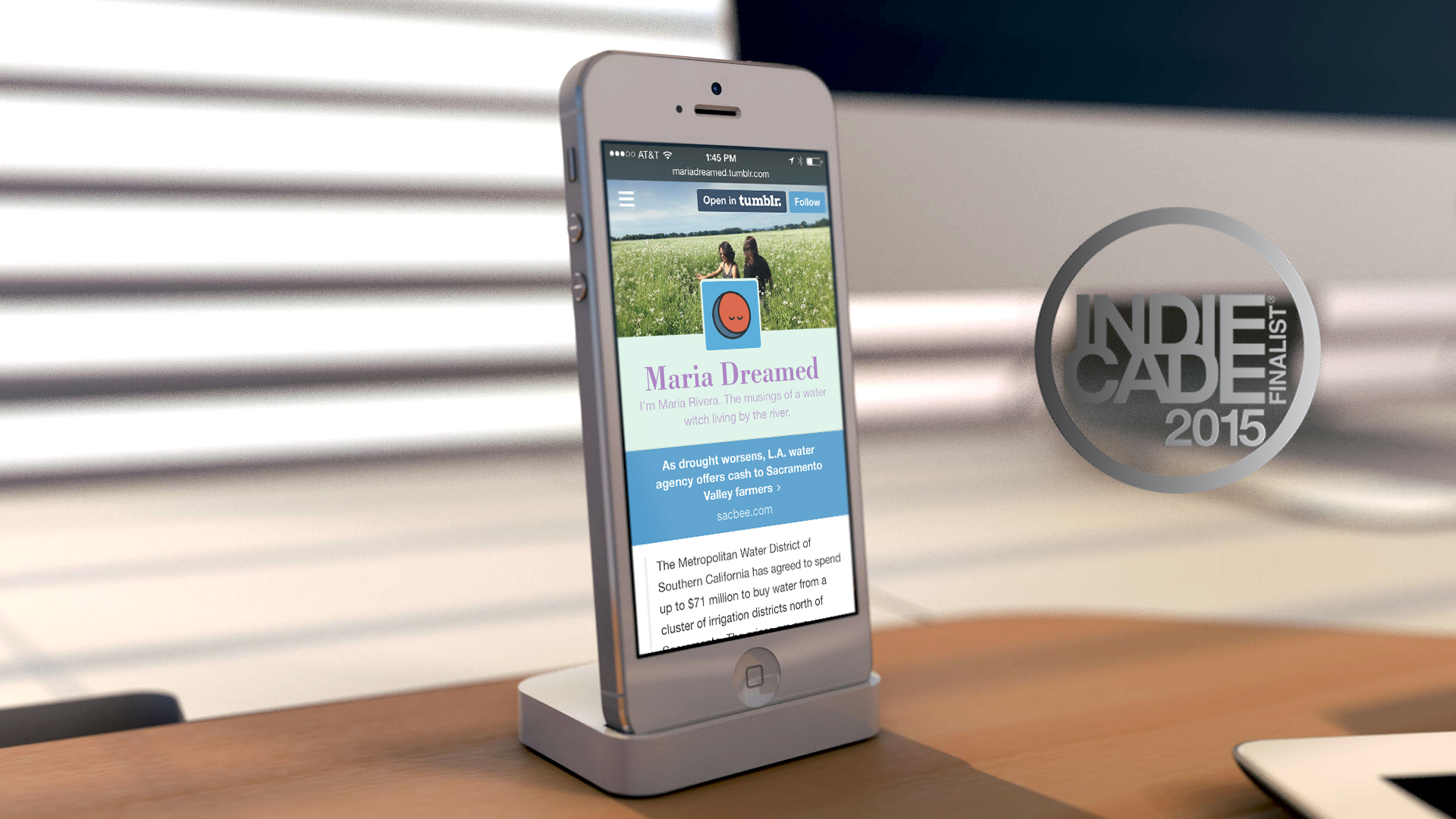
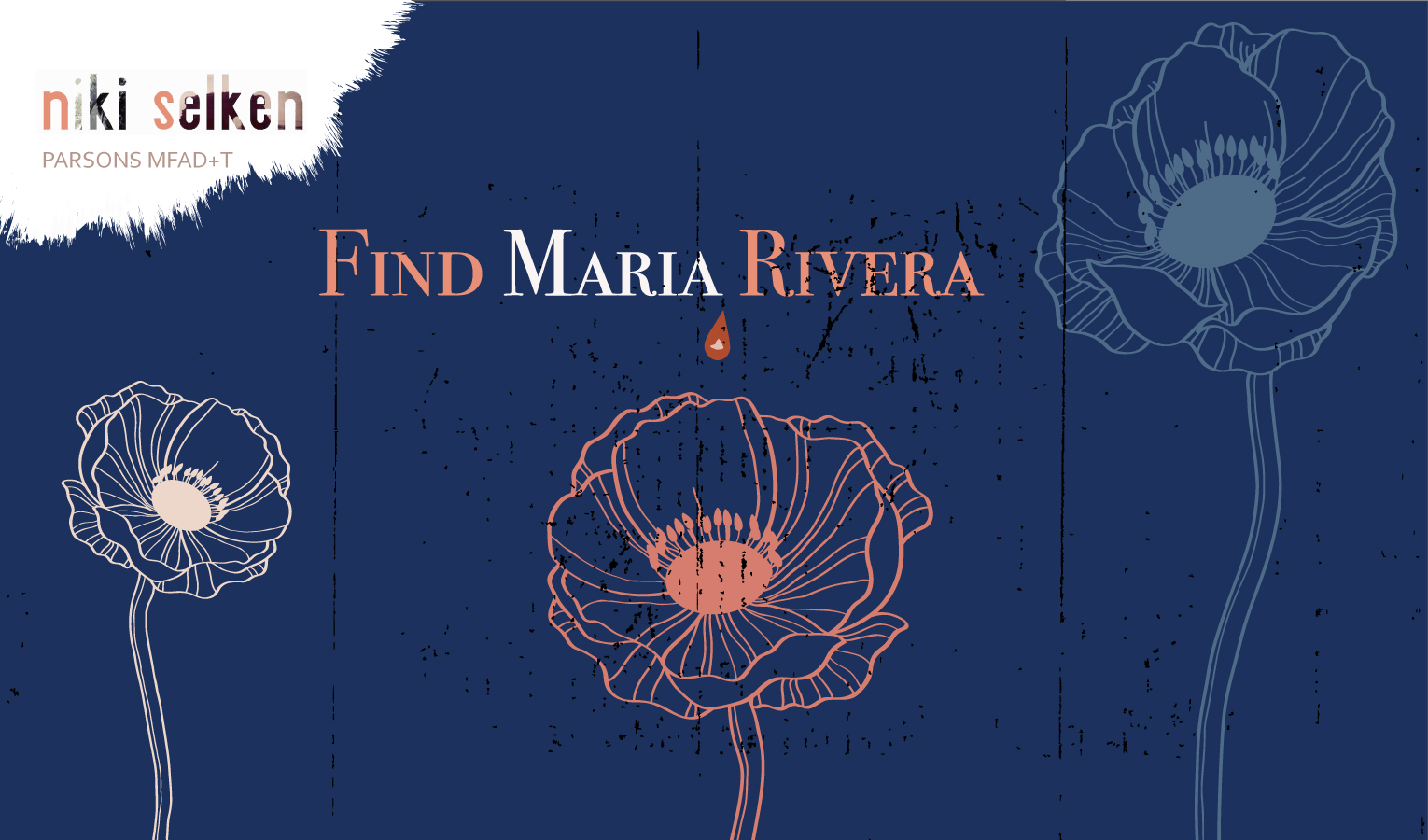
Find Maria Rivera is a narrative, puzzle-based instillation which follows the story of the disappearance of a water witch from Visalia, CA. Situated between Escape The Room games and Participatory Theater, like Punch Drunk’s Sleep No More, Find Maria Rivera explores themes of environmentalism, mythology, and CSI. The piece leverages responsive objects, web experiences and audio to draw in the participant in a mysterious and emerging story experience. The story takes place in the central valley of California with the backdrop of the looming drought and water crisis. As the user enters the instillation they will be presented with a series of clues and puzzles in a CSI investigation room. The participant will explore the physical objects, text, mobile websites, and audio to unravel the mystery.
I am adapting the Rusalka myth of a fallen water bearer to be set in the current day Central Valley of California. The story follows the disappearance of a water witch, Antonia Rivera, from the town of Visalia. Her friends and family set out to find her, but they enlist the player to help them. Some believe she has become a Rusalka because of the strange artifacts and evidence they find while looking for her. The player will search for her and uncover dark truths about what she has become and what has become of the environment and water that they depend on.
Antonia’s job as a dowser, a person who helps farmers find groundwater in order to dig groundwells, afforded her a collection of interesting folk objects related to water, weather, and environmental monitoring. As the drought in California worsened more farmers turned to dowsers to find alternate sources of water. (Visser 2014) Antonia’s role as a water bearer expands as the environmental situation decays, but then she disappears.
The user will explore a collection of interactive artifacts from Antonia’s personal belongings. The objects will help entrance the user into the mysterious and magical world of the Rusalka. They will be displayed in a museum installation style. For example, a user might open a drawer and discover that it triggers an eerie song, or they might discover a phone number and call it on their phone to hear a message. This kind of embodied experience of the environment and the objects from a character’s life may help tell another side of the story about Antonia’s disappearance and provide the user clues that will help them uncover the mystery.
I am designing with a few constraints. Unlike an escape from the room game, a gallery installation has the user's attention for about 10-15 minutes max. Moreover, there may be one to three people in the installation at a time, so that means that the user should have multiple points of entry into the story and puzzles. I have four points of entry into the story: map, books, drawers, and board of clues. The map color codes those below. The final solution to the mystery of Maria's disappearance lies inside the book safe. However, the user should be able to put together the clues throughout the installation to start to piece together the story weather or not they open the safe.
The Timeline
I created a timeline for the last day that Maria was seen.
● 7am: Maria wakes up.
● 8am: She goes to the St. John’s River Trail - She loses her necklace or pendulum.
● 10am: She appears at work at the Crystal Barn.
● 1pm: She orders lunch over the phone from Watsons Veggie Garden and picks it up.
● 4:30pm: She meets at Garcia Farms for a Dowsing session; the session is paid for by farm conglomerate, Cascade Farms. ( I am making this website)
● 6pm: She goes back to the St. John’s River to look for her lost item.
● After 6pm: She disappears. When was she reported missing? Who reported it?
The Puzzles
I decided to create three game mechanics or puzzles to control the release of information about the story.
1. The player reads a letter on the wall that tells them to find a phone number.
2. Find the phone number to call and listen to a message with clues.
3. Use the voice message to guide the discovery of the Tarot Card clues and the Tumblr to help understand them.
4. Find the combo to the lock on the book safe.
Find Maria Rivera
Abstract
Find Maria Rivera is a narrative, puzzle-based instillation which follows the story of the disappearance of a water witch from Visalia, CA. Situated between Escape The Room games and Participatory Theater, like Punch Drunk’s Sleep No More, Find Maria Rivera explores themes of environmentalism, mythology, and CSI. The piece leverages responsive objects, web experiences and audio to draw in the participant in a mysterious and emerging story experience. The story takes place in the central valley of California with the backdrop of the looming drought and water crisis. As the user enters the instillation they will be presented with a series of clues and puzzles in a CSI investigation room. The participant will explore the physical objects, text, mobile websites, and audio to unravel the mystery.
Demo Day
During the recent Demo Day I was able to show my work to a number of people. I created a Missing Person poster for the main character, Maria Rivera, which was hung above a chest of 18 small drawers. People seemed engaged with the set of drawers I had on display and they spent time opening them and trying to understand the objects inside. For this demo I was interested in what story the objects inside the drawers told people. Most people seemed to understand that the story was about a missing woman who was a water dowser. They liked the multimedia element of having an iPod playing just one opera song on repeat. A few of them opened all the drawers and even looked up the URL on their phones I had listed on a piece of paper to the Main character, Maria’s blog. Figures 2 and 3 are the list of clues that I originally envisioned for the project. For the demo I had about half of the clues in the drawers. My professor urged me to find a way to orient the users as they engage with the project. I have to find a way to clue them in to how they are meant to engage with the instillation and what their role is within the story.
Research
I examined my feedback and decided to work on some new visual design concepts that might help frame the user’s experience of the story. I also went back to my inspirational game source and played through a number of Neutral’s Escape The Room Games. I also signed up for a live action escape game, The DaVinci Obsession, with Enigma Rooms. The room was interesting to me because unlike the other room I visited before this one has a plot:
“Your client's grandfather, who is a famous historian notoriously known by his obsession of [sic] Da Vinci's work, disappeared after leaving a strange letter to your client. In the letter he urges your client to uncover the secret hidden within his gallery office, as someone after the secret will get to it within an hour…”
Playing through these “room escape” games, both physical and digital, are giving me the tools to create engaging puzzles for my thesis.
The Story
I created a timeline for the last day that Maria was seen: How was this evidence put together? Who knew when she woke up? Who knew that she went on a hike? Etc.
7am: Maria wakes up.
8am: She goes to the St. John’s River Trail - She loses her necklace or pendulum.
10am: She appears at work at the Crystal Barn.
1pm: She orders lunch over the phone from Watsons Veggie Garden and picks it up.
4:30pm: She meets at Garcia Farms for a Dowsing session; the session is paid for by farm conglomerate, Cascade Farms. ( I am making this website)
6pm: She goes back to the St. John’s River to look for her lost item.
6 - ?: She disappears. When was she reported missing? Who reported it?
The Puzzles
I decided to create three game mechanics or puzzles to control the release of information about the story. They are listed below.
1. Find the phone number to call and listen to a message from ? about ? (this will be a Google voice number that they must call)
2. Find the hidden note or something with the compass and map
3. Find the combo to the lock on the book safe. (I can embed clues to this through Maria’s Tumblr and through a set of Tarot Cards in the drawers.)


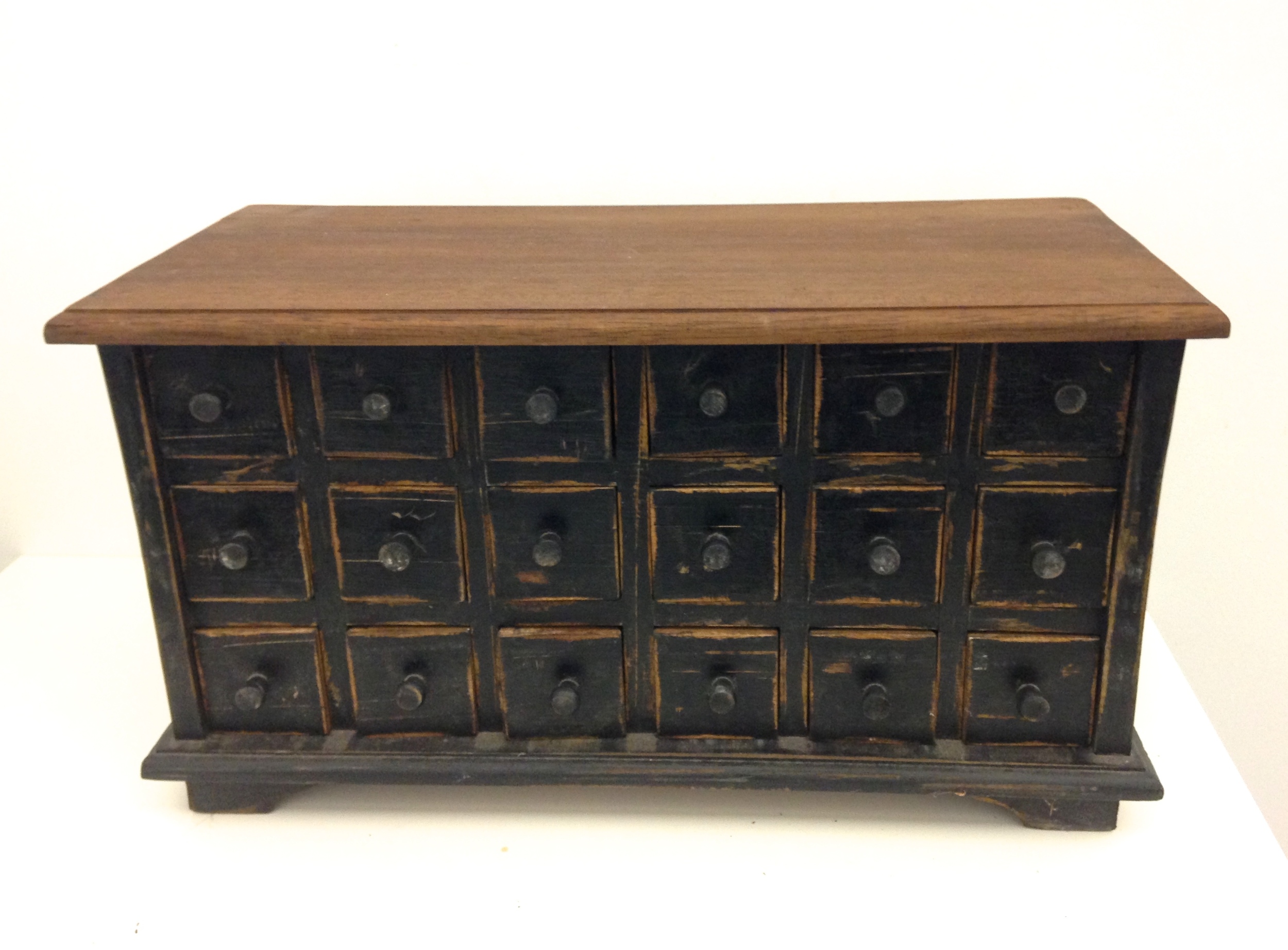
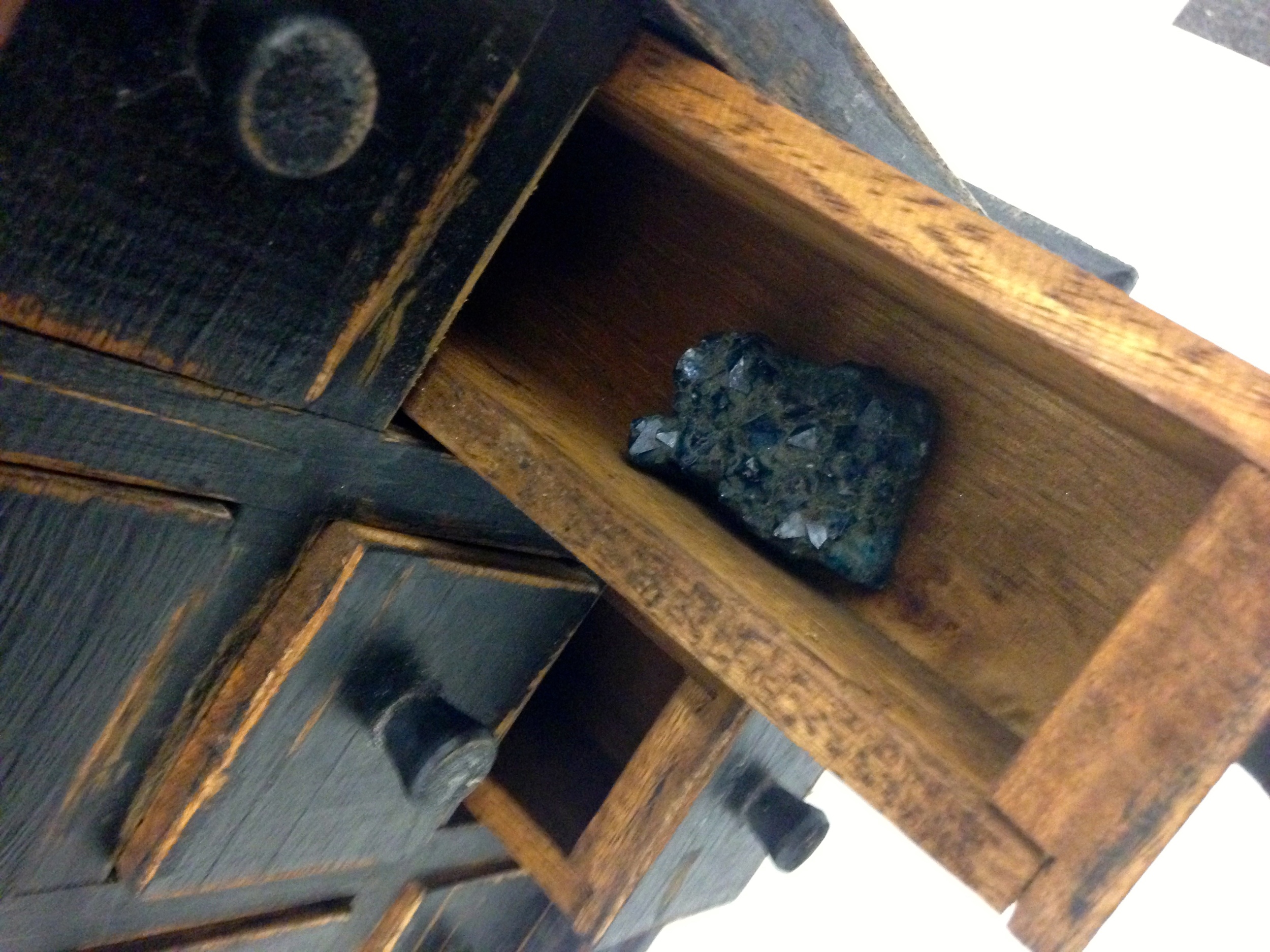

Assets
I am creating a list of digital/print assets to put on the CSI boards. Right now here is what I have:
San Joaquin River story: http://www.cnn.com/interactive/2014/09/opinion/endangered-river-ctl/
Water witches in CA: http://www.huffingtonpost.com/2014/03/02/water-witches-california-drought_n_4885092.html
Myths about the CA drought http://www.washingtonpost.com/opinions/five-myths-about-californias-drought/2014/08/29/6a6b8ed4-2c69-11e4-994d-202962a9150c_story.html
People have no water in Tulare County: http://www.nytimes.com/2014/10/03/us/california-drought-tulare-county.html
Reservoir conditions graph: http://cdec.water.ca.gov/cdecapp/resapp/getResGraphsMain.action
Chinatown water feud in CA: http://www.nytimes.com/2015/01/21/us/a-century-on-the-chinatown-water-feud-ebbs.html?ref=topics
Community water center: http://www.communitywatercenter.org/
I also have a chest of 18 small drawers. These drawers will be filled with clues and story flavor elements. One of the drawers will trigger the playing of a Rusalka opera song, as well as trigger a light that will illuminate an object (maybe my Rusalka Headdress).
Experience Map of Find Maria Rivera
I am designing with a few constraints. Unlike an escape from the room game, a gallery instillation has the user's attention for about 10-15 minutes max. Moreover, there may be one to three people in the instillation at a time, so that means that the user should have multiple points of entry into the story and puzzles. I have four points of entry into the story: map, books, drawers, and board of clues. The map color codes those below. The final solution to the mystery of Maria's disappearance lies inside the book safe. However, the user should be able to put together the clues throughout the instillation to start to piece together the story weather or not they open the safe.
Next Steps
Remake the User Experience and Information Release map.
Make a list of artifacts and items that is numbered and connect it to map.
Record Opera Song
Write and Record Poem on Google Voice Number
User Test the User Experience of the puzzles.
Create the song triggering drawer
Set up instillation in the space and test
A Prayer for Rain: Thesis One Final Paper
A Prayer for Rain is an transmedia adaptation of the Russian Rusalka myth which leverages interactive objects and maps to explore the water crisis in Central California. The project is meant to inform the user about the damages of climate change and unregulated groundwater consumption within California, through the story of the disappearance of a water witch in Visalia, CA. The piece will explore web based interactive media as well as three constructed, responsive objects as a means of storytelling.
Read MoreRusalka Headdress
The Leaf Faerie Headdress, featured on Adafruit's blog, is inspired by the Russian Rusalka Myth. Rusalka came out of the water in the spring to transfer life-giving moisture to the fields and thus helped nurture the crop. However, Rusalka had a dark side, and if you came to close to the river, they might drown you. The headdress transforms from a whimsical and magical garland to an eerie glowing headdress in the dark. Much like the light and dark of the Rusalka.
Map Prototype
Design Questions and User Scenarios
Thesis Design Questions
How can I use critical design to bring attention to the drought in specifically central California that is and will increasingly affect the country’s food supply?
How might we design wearables that provide comfort given the projected extremes of temperature within already dry regions of California?
What would a reverse “Dust Bowl” migration of displaced farmers from California to Oklahoma look like as a future fiction?
How might we reimagine folk objects dedicated to manifesting water such as dowsing rods, shrines, and rain totems for the digital age?
Abstract
Climate change is a real phenomenon that is severely affecting the Central Valley of California with a crop destroying drought. This area is of note because it produces 1/3rd of all of the food we consume as a country; to lose it as an agricultural center would be disastrous. I want to explore a futuristic design fiction, which combines critical design, storytelling, and physical computing to contemplate the way we might mitigate climate change over time. I have two propositions for design inquiry into this subject.
A PRAYER FOR RAIN
A Prayer for Rain is a series of folk objects and interactive shrines with one purpose: to pray for rain in the Central Valley of CA. I want to ground my exploration in the local traditions of the area’s farmers’ such as using dowsing rods used to find well water or praying with the aid of holy fountains and outdoor Catholic shrines. I will update these objects to include environmental sensors that connect with humidity, temperature, and dust to comment on the changing climate.
A MODERN MIGRATION
A Modern Migration is a fictional narrative about the farmers of the Central Valley in CA facing a crop destroying drought and their search for a new home and farmland across the US. The transmedia story would be presented combining video projection on fog, an interactive website documenting the “migration” and an infographic, online story map that guides the user through the geolocated narrative of farmer refugees.
User Scenarios
Character Name: Michelle
gender: Female
Age: 30
location: San Jose
Occupation: Project Manager at Ebay
Income Level: $70,000
Interests: Foodie, travel, concert going, costume parties, and she loves bright colored clothes!
How did they come to my work:
Michelle went to a gallery show in LA while on vacation. Her friend Sean is plugged into the scene there and always invites her along to shows. She was out for the opening and she waited in a line to get into the immersive installation, which only allowed seven people in at a time. As she entered the space she motivated that the room was filled with fog or mist and there was a billowing projection on the fog. She also noted that it was very warm in the room. She moved to the edge of the space and noticed that the floor was painted with the cycles of the sun moving across the horizon. She moved to step on one of the sun patterns and that triggered the video to change. The video moved from an atmospheric light show to a depiction of a farmer in the central valley working the land and then a woman watching the dry soil slide between her fingers. Realizing that the sun patterns triggered video she moved to the next sun shape. The video shifted to the image of a caravan in the desert lead by an old truck carrying a family and all their belongings. Audio was triggered that told the story of a woman traveling from Visalia to Oklahoma in search of a new life on a farm because the farm where she worked had dried up. Her experience in the room made her wonder if the farms in the central valley were really losing water. She noticed a plaque on the wall and saw a URL to the project website. There she was able to learn more about how the Central Valley of California provides much of the food for the country and how in danger the farms really are.
Character Name: Kristoph
gender: Male
Age: 42
Location: New York City
Occupation: Professor of Architecture
Income Level: $100,000
Interests: Art, design, architecture, gardening, collecting milk glass and other mid century household items.
How did they come to my work:
Kristoph was on Twitter one morning and followed a tweet link about design objects of climate change. That took him to a blog post about my project, A Prayer for Rain:
A series of folk objects and interactive shrines with one purpose: to pray for rain in the Central Valley of CA. He was interested in the idea of mundane, household objects that take on heightened meanings and so he learned more about the show and decided to go check it out in a local NYC gallery. From the blog post he went to the project website and read up on the drought issues facing the Central Valley of CA, which the piece addresses. He explored an interactive map of the region and looked at some photos of the work. He wanted to see it it person so he went to the gallery. When he walked in, he was drawn to the shrine in the center of the room. As he approached the shrine, a sound of thunder went off and he heard rain falling. He understood that his movements somehow triggered the interaction. He was then drawn to a dowsing rod mounted on the wall. The wall plaque described it as a tool for finding water and building wells, something he knows about. He noticed however that the rod was displaying some kind of reading and the plaque said that the rod detects humidity and responds to that by changing it’s color. Kristoph looked at the other items and left the gallery. He decided to share this project with his class and encourage them to explore the notion of climate change as mediated by constructed environments.
Prototype #2: Imagined Objects as Story
My second prototype form is inspired by Daniel Spoerri's work. He would have a dinner party or event and then keep the plates and tables eaten off of in the form of a "snare-pictures," a type of assemblage or object art. The reason that I like this form is because of what it tells about the people who had these experiences. I am interested in understanding what story a user would make after viewing a collection of objects. Are there connotations about someone we can learn form seeing a collection of their possessions?
Peter Menzel photographed families from around the world with their possessions and published a book about it. I wonder what story those images would tell if those people were removed from the picture?
Texas from Material World: A Global Family Portrait by Peter Menzel and Faith D’Aluisio
I used the second prototype to explore form rather than concept. I created a workshop/user test for my second prototype. I gathered a series of objects and presented them to a group. Each person was given a pen and a notepad. They were asked to explore the objects on the table in front of them and then create a story about the person who they might have belonged to. They were also asked which of the objects told the story of the character most strongly and why. My thesis partner, Ezgi Ucar and myself presented these objects to two different sets of people for a total of 30 people in the user test.
The Character
I discovered many similarities between the kind of character most people imagined after interacting with the collection of objects. Most people described this character who owned the objects as a woman in her late 20s to 30s. They described her as a traveler and an imaginative person who loves animals and music. They also had similarity across the objects which resonated with them to tell the story of the character. The Objects That Told The Story:
Glass box with moss and a crystal in it
A wooden flute
A tiny toy VW bus
A book of Finnish love poems
Midterm Presentation and Feedback
For the midterm I made sure to contextualize my work in terms of climate change and more specifically the issues of climate change and drought within that region. I also presented the notion of a future narrative in order to explore how this area might look through the eyes of a character living 50-80 years in the future.
My feedback from the critic, Madeline Schwartzman, was mixed and somewhat hard to follow at times. She provided one excellent research article about the San Joaquin river that runs through the state of California. (CNN 2014) She was very interested in the idea of a fiction that expressed something about the future. She was less interested in the idea of California and also said that the dress idea I have that responds to the weather or pollution is uninteresting unless it was more of a data visualization with character like this online Wind Map. (Wind Map 2014)
The feedback from Melanie Crean was centered around me further narrowing down my focus on the area and issue I am studying about climate change. She encouraged me to figure that out while simultaneously broadening my response to that issue so that form follows concept a bit better. She gave me three concrete ideas on how to move forward:
First, based on research about future climates, find some specific aspects you feel are really compelling.
Then, write a detailed description of the world and what / why / how it is. Think Calvino’s Invisible Cities.
Then, consider what types of things are normally used there, would be transgressive there, etc.
Next Steps
I am going to create a more detailed character and user persona for this fictional future person. That will guide my design process. The objects that resonated with people will be a form guide to inform what types of pieces I will make for my thesis.
I am also doing research on the dust bowl of the 1930s which I will use to guide my visual style. I am also looking for parallels between what is happening now in California and what happened then in Oklahoma. Then I will isolate the similarities and characteristics of the current drought in California and (using the Dust Bowl as a model) project what kind of changes we can expect in the climate moving forward in time.
From there, I want to then explore the kinds of objects this person living in this place, or perhaps migrating from this place, as happened during the migration from Oklahoma to California during the dust bowl, would be using.
I hope this exploration will allow me to further imagine a future world that expresses the consequences of not taking care of the environment of our current one.
Thesis Concept
“Designers ignore - at our own and others' peril-the extent to which any act of design is an act both of prefiguring a future social milieu but also the erasure of multiple possible alternatives. Design, for Fry, both designs and keeps on designing.” (Clarke 2011)
Concept
What Tony Fry calls, Defuturing is a guiding principle for my thesis. I want to build upon my explorations into screen-less design that promotes connectivity as well as explore the potential impact which climate change may have on our lives. By imagining a series of little objects or wearables that contend with the climate extremes over fifty to one hundred years in the future. Much like the image below, I want to explore a futuristic design fiction, which combines critical design, storytelling, and physical computing to contemplate the way we might mitigate climate change over time. The fantasy of an artist in 1900 (The Public Domain Review 2014), imagining a world under water, may become a reality in the year 2050. Islands like the Maldives are planning to evacuate thousands of citizens as the rising sea is covering their homes and California is facing the worst drought in decades. How might design be employed to call attention to and help plan for these new challenges?
I am motivated by explorations in materials, technology and story. Right now I am working on material and technology prototypes, but I will begin writing a future looking narrative to inform my design. I would like my project to examine speculative narrative with concretized, physical objects that exist as relics of a possible future. I would like to explore synesthesia, or the transforming of one sense, such as temperature or touch into another, such as visuals or music. I would like to create sensory prototypes that reflect information and experience without a screen.
Precedents and Domains
I am studying Climate Change because I want to find out how climate change will affect us in 50 years in order to Design new clothes and accessories to accommodate those changes. I am focusing my inquiry into the desert regions of California, because that is where I am from. I have seen first hand, the effects and experienced the temperature extremes common to that area. I want to find out how best to live in balance with the extremities of temperature in order to design wearables that enhance the human body’s ability to mediate that environment.
The U.S. National Climate Assessment (NCA) in 2013 released a set of future climate change scenarios developed by multiple agencies in consultation with an NCA working group whose members include both university-based and Federal research scientists. These scenarios project the possible changes in temperature, climate, lifestyle, water supply, rainfall in each section of the U.S. The Southwest report cautions about extreme weather conditions and predicts an increase in temperature between five and ten degrees between the years 2041 - 2070 and parts of California may experience more than 150 days per year where the temperature is over 95F. This kind of heat combined with droughts and flooding in seasons with rain and a dwindling groundwater supply could completely change where and how people live. (Scenarios for Climate Assessment and Adaptation 2013, 42)
I am studying Dystopian Futures because I want to find out how to craft a narrative about the future in order to predict and invent design fictions that can address that narrative. One influence on my thinking is JG Ballard’s novel, The Drowned World. The Drowned World explores earth after a series of solar flares have increased the intensity of the sun’s heat and radiation, where most of the previously habitable areas flooded, tropical jungle or swamps. The story follows the biologist Dr Robert Kerans and his struggles against the devolutionary impulses of the environment. The changing climate gives all the characters strange dreams, which haunt their waking life. I’m inspired by this projection of the future as people become more in tune and connected to the landscape around them. As nature changes the climate in dramatic ways we may be forced to examine our own connectivity and place within the larger ecosystem.
Wearable designs such as Kobikant’s “The Crying Dress”, Chiu Chih's “survival kit for the ever-changing planet”, and Diffus’s “Climate Dress” all address the issue of climate change through wearable technology.
Diffus’s Climate Dress is laced with hundreds of tiny LEDs that respond to carbon dioxide in the atmosphere. Powered by an Arduino Lilypad microprocessor and a carbon dioxide detector, the haute-tech frock uses conductive embroidery to transmit information to the hand-stitched lights, resulting in patterns that range from slow pulses to rapid flashes depending on the concentration of the greenhouse gas. (Ecouterre 2014)
Climate dress uses CO2, one of the principal causes of climate change and ozone erosion, to create visual patterns on a garment; this dress confronts us with our own environmental destruction in a beautiful display what creates a dark paradox.
Process
My first paper prototype combines paper engineering, soft circuits and a new idea. When thinking about my project I imagine the future in 50 years, when climate change has progressed to create temperature extremes and air pollution issues. I want to investigate the way in which we might adapt our clothing and fashion items to address these climate and environmental shifts.
Hand held fans are traditional in many cultures where people have had to live in warm climates. They provide man made cooling and comfort when it is very warm out. I wanted to use this object as a template for a new kind of fashion and comfort accessory. I imagine a fan that would turn on when you unfold it and sense the particulates in the air and change a series of LEDs to indicate the relative air quality near the user. As the air gets worse, the fan's led pattern will be more beautiful, brighter, more vibrant. I imagine the fan will look amazing in the very polluted central valley of California and look very simple and plain in the clean sea air of Honolulu, Hawaii.
My current prototype is a proof of concept of a switch which turns an LED on when the fan is held in the hand. It was constructed with one LED, conductive thread, copper tape, a removable 3V battery, wood and paper.
Questions and Concerns
I am not sure how to connect the narrative of a future audience to the present day prototypes I am creating. I am also worried about making the future target audience clear, while making sure the audience in the present who contemplates and interacts with the designs I create is included in my thinking about the designs. In some way I am designing for two very different audiences. One is a very particular, projected future person living in California in the year 2070 and the other is the current MFADT community and the broader technology/design community in 2015. I am investigating the following questions:
Who is likely to wear new tech that responds to temperature and toxicity shifts?
What will the temperatures be like on the planet in 50-100 years?
How might we design wearables that provide comfort given the projected extremes of temperature within already dry regions of California?
What are the projected temperature changes in fifty years?
Bibliography
Ballard, J. G. Drowned World. Doubleday, 1962.
Clarke, Alison J. "Chapter Two." Design Anthropology: Object Culture in the 21st Century. Wien: Springer, 2011. 36. Print.
"Climate Dress by Diffus." Ecouterre Climate Dress by Diffus Comments. Accessed September 17, 2014. http://www.ecouterre.com/led-equipped-climate-dress-monitors-carbon-dioxide-in-the-air/pollution-dress-6/.
"The Crying Dress." KOBAKANT. Accessed September 17, 2014. http://www.kobakant.at/?p=222.
"France in the Year 2000." The Public Domain Review. Accessed August 20, 2014. http://publicdomainreview.org/collections/france-in-the-year-2000-1899-1910/.
"Regional Climate Trends and Scenarios for the U.S. National Climate Assessment. Part 5. Climate of the Southwest U.S." Home. Accessed September 17, 2014. http://scenarios.globalchange.gov/report/regional-climate-trends-and-scenarios-us-national-climate-assessment-part-5-climate-southwest.
"Chiu Chih's Survival Kit for the Ever-changing Planet - Designboom | Architecture & Design Magazine." Designboom Architecture Design Magazine Chiu Chihs Survival Kit for the Everchanging Planet Comments. Accessed September 17, 2014. http://www.designboom.com/art/chiu-chihs-survival-kit-for-the-ever-changing-planet/.

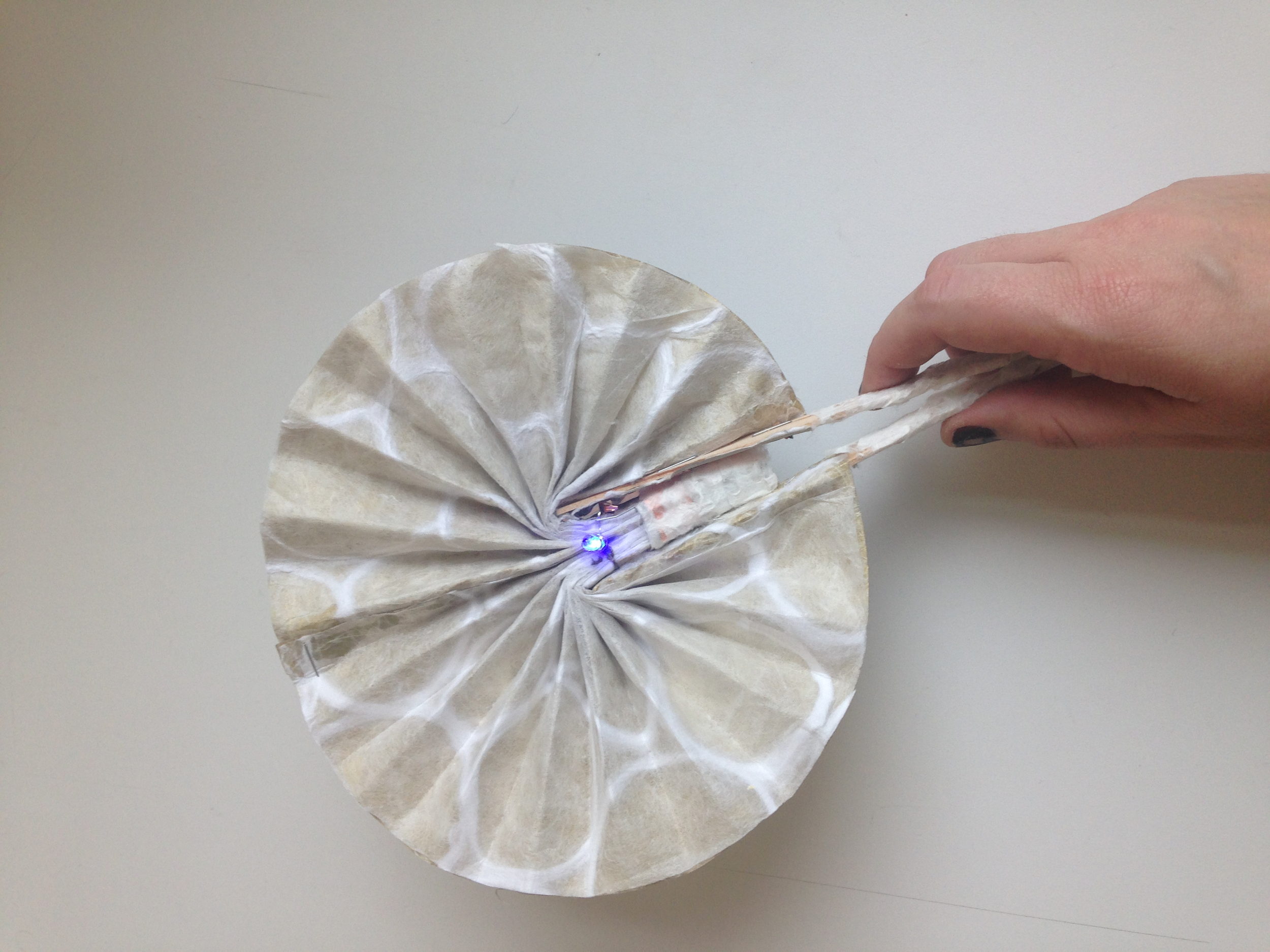
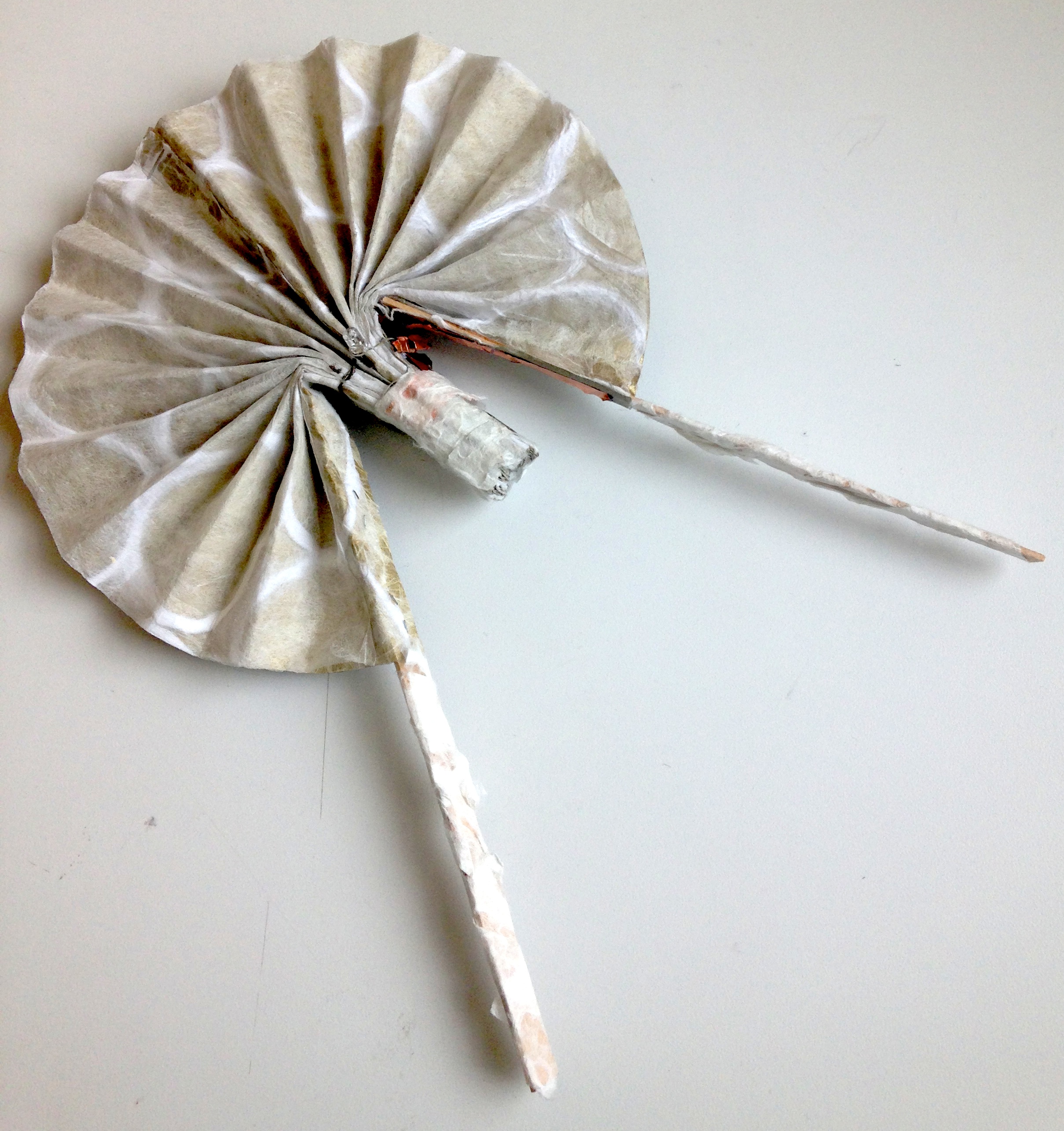


Prototype of a responsive fan
My first paper prototype combines paper engineering, soft circuits and a new idea. When thinking about my project I imagine the future in 50 years, when climate change has progressed to create temperature extremes and air pollution issues. I want to investigate the way in which we might adapt our clothing and fashion items to address these climate and environmental shifts.
Hand held fans are traditional in many cultures where people have had to live in warm climates. They provide man made cooling and comfort when it is very warm out. I wanted to use this object as a template for a new kind of fashion and comfort accessory. I imagine a fan that would turn on when you unfold it and sense the particulates in the air and change a series of LEDs to indicate the relative air quality near the user. As the air gets worse, the fan's led pattern will be more beautiful, brighter, more vibrant. I imagine the fan will look amazing in the very polluted central valley of California and look very simple and plain in the clean sea air of Honolulu, Hawaii.
My current prototype is a proof of concept of a switch which turns an LED on when the fan is held in the hand. It was constructed with one LED, conductive thread, copper tape, a removable 3V battery, wood and paper.
Thesis Concept Map
This Concept Map covers the Domains of inquiry for my thesis, concepts, materials, and precedents to date. Each is in a different shape and color for ease of reading. More to come as the project unfolds.

